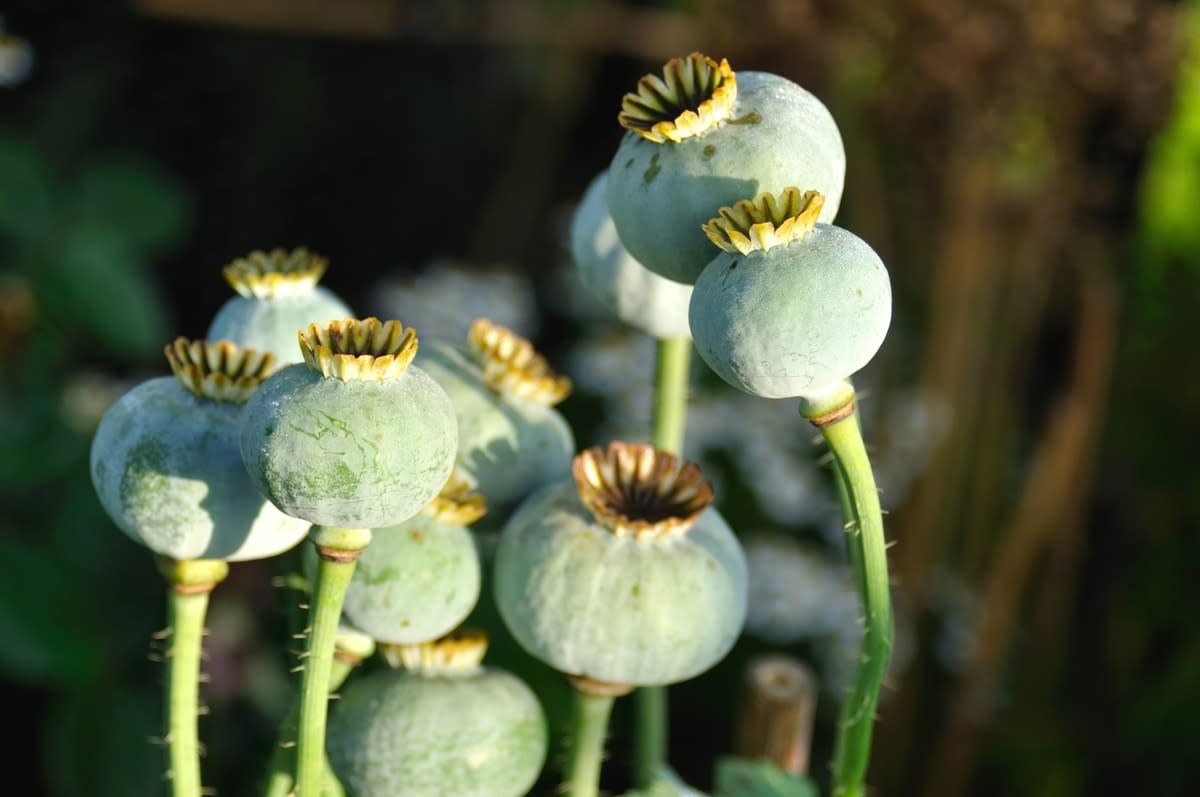
Opium poppies – with their long stems, distinctive seed pods and beautiful coloured flowers – are one of the oldest known plants on earth. They were drawn on ancient artefacts from the Middle East, Europe and India 4000 years BC. The properties of the milky sap (opium) extracted from the plant were well-known to ancient civilisations who used it for healing, anaesthesia and ritual.

Now, in 2019, the notion of an “opioid crisis” is all too familiar. It’s a defining public health issue of our times.
In the United States, a public health emergency was called by the government’s Health Department in 2017 after a boom in prescriptions issued and a subsequent explosion in misuse of both prescription (for example, oxycodone) and illegal (such as heroin) opiates.
The US figures are startling. According to the Health Department and based on data for 2017 and 2018, 11.4 million people misused prescription opioids (in 2017), and about 130 people died each day from an opioid-related overdose. Worldwide use of prescription opioids more than doubled between 2001-2013.
In Australia, data just released shows that deaths from unintentional drug overdoses increased 38 per cent between 2001 and 2017 and grew at more than three per cent a year, with disproportionate numbers in regional Victoria and New South Wales. More than half of all those unintentional deaths came from opioids including oxycodone, codeine and heroin.
The Australian federal government last year launched a crackdown on prescription opioids in a bid to avoid a US-style emergency, sending letters to 5000 GPs telling them their opioid prescriptions were being monitored. Two weeks ago, the government announced smaller post-surgery opioid packs, for patients to take home, and narrowed the use of the powerful opioid fentanyl in medical settings.
Prescribed opioids are a blessing and a curse. Opioids are among the most powerful analgesics available to medicine, but they have huge capacity to cause harm. Here, Lens asks Monash University experts: Where to from here?
Professor Paul Myles, Director of Anaesthesia and Perioperative Medicine at Monash and the Alfred Hospital.
“There are simply not enough expert, specialist pain doctors in Australia. In Melbourne there are too few specialists for people with any chronic pain that really goes beyond what the average GP can manage, or if the person is not responding.

“The poor GP tries everything they can, and they might put them on opioid painkillers that may well lead to a dependence situation. As a short-term fix it will work for a few weeks. Patients can be well-managed, but there’s a group of 10 to 20 per cent who don’t get results and need special treatment.
“The waiting list for specialist pain doctors can be six months or longer. By then it’s almost too late. It’s a systemic problem that makes the community vulnerable to so-called magic bullets, which are the opioid medications.
“A patient will often come to a pain specialist already on opioids because they’ve been through GPs and they’ve tried everything else. Or discharged from hospital on opioids. In the specialist pain clinics, they know this is simply the wrong way to go, and the patient, who can feel desperate, needs to have a trusting relationship with their doctor and work through a treatment program that builds in safe bridging medications and non-pharmacological programs like physiotherapy or occupational therapy or cognitive behavioural therapy – but it’s hard. It requires a lot of time and effort from the physician and the patient.
“In the 1990s and into the 2000s there was a big push by surgeons, anaesthetists and pain specialists to improve pain management after surgery because we saw pain as undertreated, but a side effect of that approach is that perhaps we’ve overtreated pain and made a new problem – adding to the opioid epidemic.
“But Australia is ahead of the world in that we recognised this as a problem early, and we’ve now readjusted our approach to treat pain with opioids immediately after surgery, but then quickly wean them off it.”
Associate Professor Suzanne Nielsen, Monash Addiction Research Centre
“Everyone’s focus has been on prescription opioids, but in the background there’s been a resurgence of heroin, and we haven’t really had the attention on it that it might need. This happened in the United States, and we’re starting to mirror the US pattern where there was a whole lot of focus on pharmaceutical opioids and trying to reduce the harms, and they achieved that, but in the background there was an increase in heroin use and related deaths.
“Then fentanyl entered the market. The magnitude of harms from illicit fentanyl quickly overtook those seen with pharmaceutical opioids. The cautionary tale here is that attempting to solve one problem may cause a much greater problem to emerge if we don’t simultaneously put some preventative measures in place.”
A landmark study just published in the journal Addiction studied seven years’ worth of Ambulance Victoria data, and found the state was potentially facing a heroin crisis to match the mid-to-late 1990s. In 1999, there were 359 heroin-related deaths in the state. The study found that from 2014, after a new form of oxycodone was introduced that’s harder to inject, heroin began to boom, with a 25 per cent increase from 2014-18.
“Our total number of deaths each year is starting to get close to the peak we had in the late ’90s with heroin. But it’s different now. In the ’90s there were high levels of availability, high-purity and low-cost heroin. After that changed, we saw a dramatic reduction in the number of opioid deaths, which increased each year, but now involved pharmaceutical opioids and a different population.
“The lesson is, if we’re going to have measures that are going to reduce access to pharmaceutical opioids, including for those who may have been using them non-medically, then at the same time we need to upscale treatment and harm-reduction responses. People who were previously accessing prescribed opioids need a range of options, or we may see increases in heroin use and harms. That’s one potential unintended consequence of restricted access to pharmaceutical opioids.”
Professor Simon Bell, Centre for Medicine Use and Safety, Pharmacy and Pharmaceutical Sciences
“Morbidity and mortality associated with prescription opioids has become a global public health issue. Our recent research has shown that 1.9 million Australian adults initiate opioids year, and about 50,000 of these people go on to become long-term users.

“We’re now planning to work with our PharmAlliance partners to better understand the impact of key legislative, regulatory and guideline changes on the use of opioids in Australia, the US and the UK.
“PharmAlliance is a partnership between Monash University, University College London and the University of North Carolina at Chapel Hill. Investigators at each university will analyse dispensing data to help determine which strategies have the greatest impact on opioid consumption.
“Clinicians are best-placed to work with consumers to conduct individualised assessments of likely benefits and risks associated with opioids and other treatments.
“ Our new research is designed to assist in the development of population-level risk prediction models that can be used to target policies and interventions to patients at greatest risk of opioid-related harm.
“These models are important to help ensure that people with chronic pain receive evidence-based management. Importantly, evidence-based management of chronic pain usually includes non-medication approaches, either with or without analgesic medications.”
Find out more about this topic and study opportunities at the Graduate Study Expo





